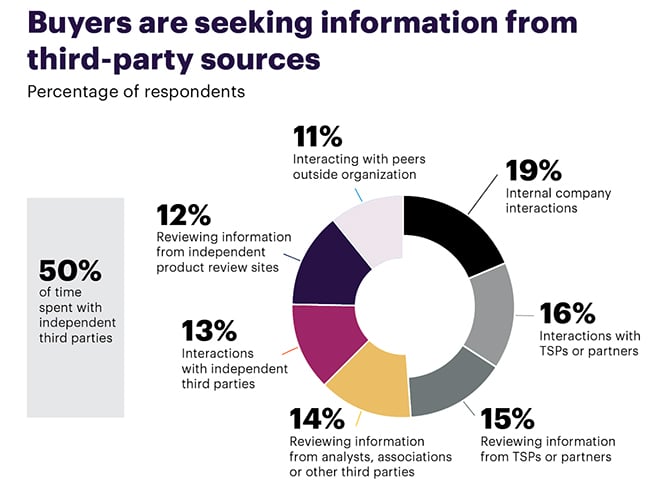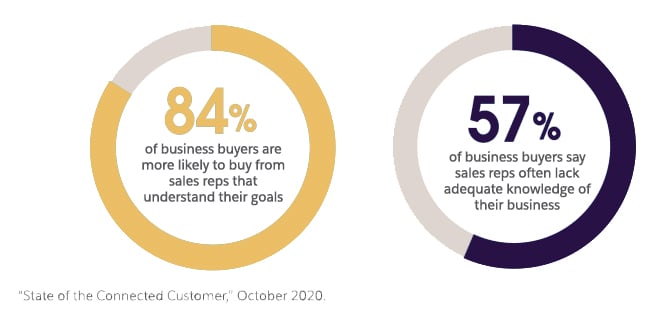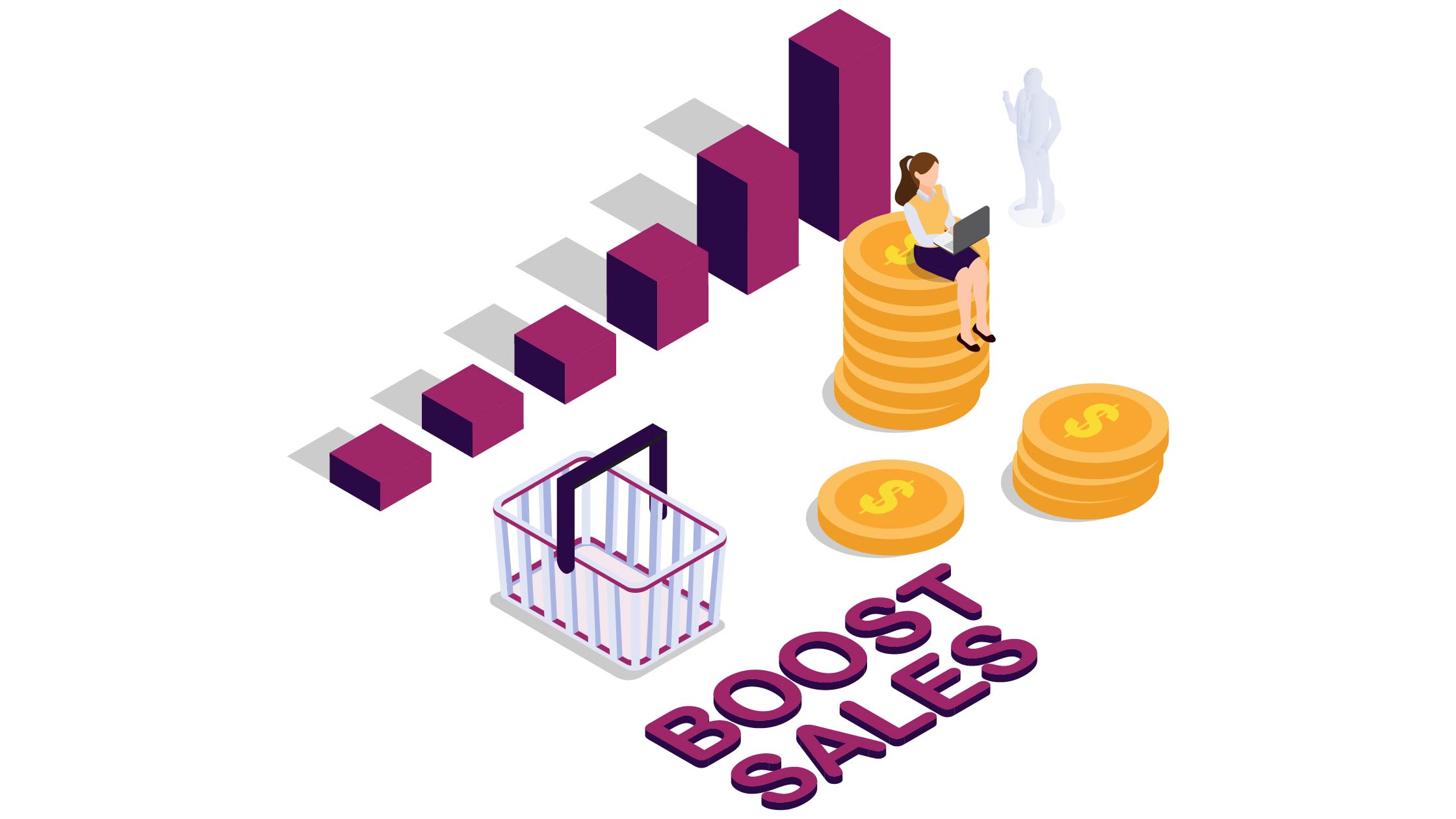
How to Identify and Implement Manufacturing Buyer Intent Signals to Boost Sales
According to Gartner, around 70% of B2B marketers use buyer intent data for their prospecting goals. In fact, the right intent data about potential buyers can deliver up to 4X sales pipeline growth.
Termed as the "future of B2B lead generation", buyer intent data broadens your conventional pool of leads by acquiring important buyer statistics before any actions are taken.
Intent data reveals information about buyer involvement and purchasing intention. Once that data is gathered from trustworthy resources with a massive volume of website traffic, it has the potential to offer you a selling edge.
Well, now that you have an idea about the huge possibilities of buyer intent, let’s dive into the details – what is buyer intent and intent signals? What is the purpose of intent, and how can it generate leads for manufacturing businesses and drive sales for them?
What is buyer intent, and why is it important for manufacturers?

The buying intent of a customer — also known as purchase intent, buyer intent, or purchase intention — is the probability of obtaining a service or product from a particular company.
Marketers and sales specialists use this stat to determine whether prospective consumers are poised to convert. It enables firms to emphasize the most viable target audience.
Purchase intent helps marketing professionals not waste resources in pursuing individuals who are unwilling to engage in the first place. Instead, the sales department limits the target group to personalize marketing strategies and boost conversions.
Buying intent is critical in the manufacturing sector since it gives you valuable insights about which prospects may prove profitable for you in the long term before they've even interacted with your company.
Check out how Revnew helped a manufacturing company book 20 meetings within two months, reduce acquisition costs by 70%, and improve product messaging clarity.
What Are Intent Signals?
Prospects devote half of their time to collecting data from third-party references. Sales teams usually sit tight to determine prospect involvement until buyers finish an activity or complete a contact form.

This is what buyer intent signals to entail. It allows manufacturing companies to identify prospect mobility and optimize engagement predicated on such metrics of intent.
Buyer intent data can be used to identify in-market opportunities and convert interested buyers into qualified leads tactically.
Valuable intent data may reveal information about prospects' research histories. Tele Intent™ Data by Revnew innovates this process by extracting insights from live interactions during prospecting, offering a unique and rich source of buyer intent data derived directly from the content and context of actual dialogues with potential clients.
You can utilize that data to develop communications and maintain a competitive advantage.
Buying intent signals can assist your sales and marketing teams to determine where consumers are in their purchasing journey, allowing them to tailor focused marketing notifications and advertisements to match the particular buyer interest cues best.
Buying signals examples in the manufacturing and industrial space include:
- Looking for details about a specific offering on Google
- Examining a particular web page link on the homepage of the manufacturer
- Reading articles about the functionalities, benefits, or perks of a specific item
- Scouring the internet for providers of a specific product on online directories
Professionals like MROs, engineers, and contractors almost constantly giving off buyer intent signals. Your only objective should be identifying them — whether they're in the initial research stage or assessing possible vendors to create a shortlisted roster.
How can you identify buyer intent signals if you are in the manufacturing sector?
.png?width=900&height=450&name=unnamed%20(25).png)
First, you must understand the different types of buying signals to identify the apt ones for your manufacturing business.
It's also essential to keep in mind that there's frequently a crossover among the various intent signal categories. A prospect may check each box or only a few of them.
You can make more educated choices if you understand how buyer intent data relates to your selling process.
Demographic indicators
Your best clients share demographic, firmographic, and technological characteristics. For instance, if you sell a product that supports marketing, you should target CMOs in charge of growth and marketing.
Demographic cues are the primary types of intent signals that can be used. Some examples include:
- Age
- Gender
- Income
- Location
- Occupation
- Education level
- Marital status
- Family size
- Home ownership
- Interests and hobbies
Firmographic buying intent is any signal that indicates a company's interest in your offerings. They include the following:
- Number of staff members
- Revenue figures
- Sector
The granularity of technological signals is even greater. Technographics, as the name implies, focuses on the:
- Innovation
- Tools
- Technologies
You can determine whether your company uses a competitor's product or your rival is not applying a solution such as yours.
Premised upon these metrics, you can tailor your global reach to guarantee it is meaningful and distinctive to your leads.
Signals triggered by events
Business news is the focus of event-based intent cues. For instance, if a burgeoning startup raises a fresh round of financing or hires a unique management team, this clearly indicates that development is taking place.
It's an excellent opportunity to reach out now and start engaging if you have a product that can assist them with their schemes. Here are some instances of event-based buyer intent signals:
- A fresh round of funding has been announced.
- Visiting industry gatherings
- New employment initiatives
When a critical event occurs, your team will respond appropriately.
Intent signals based on actions taken
Then there are action-based intent cues. Such signals refer to behaviors that you recognize your leads are taking, which demonstrate their possibility of becoming buyers.
Such action-based intent inputs are frequently associated with the funnel's bottom — so having a method to monitor and comprehend them is critical.
- Accounts that visit specific your website's pages should be targeted
- Prospects enquiring in your chat session
- People looking for keywords with an elevated intent
- Engaged on related topics on social media platforms
- Asking questions on Reddit, Quora, etc.
Moreover, Revnew’s Tele Intent™ Data enriches this understanding by capturing honest conversations with potential clients, revealing their explicit statements and nuanced expressions of interest in real-time. This direct feedback is like mining a goldmine of actionable insights, making it a superior choice for discerning true buying intentions.
When you can record such action-based buyer intent signals, you can approach prospects while they prepare to purchase.
It's an excellent way to boost your sales conversions and guarantee your salespeople are spending time with people who are most likely to purchase.
How can you implement buyer intent signals to drive sales?

Create a list of qualified target accounts
You'll see details on what subject matters multiple accounts are engaged with — as your sales team evaluates prospects' intent data sources. You can then highlight which profiles to target and how to reach them.
For instance, you could have campaigns to attract accounts with high rates of buying intention and then another set of initiatives targeting account holders still in the initial phases of their purchasing journey.
You can also use firmographic and technographic information to select a group of customers based on parameters such as:
- Annual revenue of the business
- Employees in each department
- Their site's software
It is implementable and beneficial. Your sales reps can qualify leads using the techniques they already have. For instance, if you recognize a business uses competitor apps, you can contact them and explain why your offering is superior.
Having this data allows you to tailor your advertisements to your leads, their firm, and their daily issues. As a result, you will have higher levels of engagement and more effective sales campaigns.
Proactively contact prospects
If your nearest rival contacts an ideal lead before you, you will have a difficult time persuading them you are the better choice.
You can make sure that your staff remains the first to approach high-value prospects by actually listening to buyer intent signals.
You can use intent signals to generate a lead-scoring platform based on intent metrics, and when a lead meets those criteria, you can contact them.
Among these indexes could be account activities including:
- Looks for specific types of information
- Visits your business website multiple times
- Registers for a live stream
Sales Lead Qualification With Accurate Consumer Data: With Tele Intent™ Data, you enhance lead qualification by leveraging real-time insights from prospect conversations. This detailed conversation analysis helps gauge prospect interest levels accurately, allowing for high-intent leads ranking and timely sales outreach and engagements.
Your sales team will own reliable predictors when a prospect begins the purchase decision. They could connect in a proactive instead of reactive manner.
Whenever a prospect gets your outreach call or email, they will be grateful because the timeframe is ideal for them.
Personalize your sales resources and presentations
Once you understand what your leads value and what problems they want to fix, you can tailor your sales resources to their needs.
According to a Salesforce study, 84% of customers believe that being regarded as a person is extremely crucial in choosing a firm over another.

If you don't customize your sales method to the greatest extent possible, you'll lose out on chances since your competition did.
Notify about your content generation process
You could use buyer intent signals to devise a marketing plan that addresses your customers' most pressing concerns.
Instead of relying only on targeted keywords, use intent information to guide compelling content. You could optimize your content depending on where it falls inside the funnel.
Themes with increased purchasing intention would include:
- The most effective products to resolve specific concerns
- Alternative solutions to another item
- How to address a particular issue
Each of these serves as a specific search word, which implies that an individual is about to buy something or is assertively researching their choices.
Assume you own a product with a strong market competitor. Select key phrases that place you as a workable and superior alternative to your competitor.
Anyone seeking alternatives to a good or service is keenly interested, and they're probably in the process of evaluating what's being offered via deals – to determine the best bargains.
It's an excellent time to present your material to assist people in their purchase decision. After you've posted your information, you can record how many viewers take action after checking your articles, including:
- Making a phone call
- Completing a contact form
- Viewing important pages
As you gather information on your content's effectiveness, you'll be able to determine what types of materials your biggest clients are most interested in.
You may then use that information to guide subsequent content production. Nowadays, publishing broad, formulaic substance is no longer sufficient; you must respond to specific inquiries that your leads are looking for in search results.
Reduce buyer attrition by identifying issues
Reduced attrition is an underutilized but crucial application of intent cues. You could, for instance, record whether your account holders are touring your cancellation web pages or T&Cs.
Most satisfied customers will not be perusing your cancellation section for entertainment. Therefore, it's a strong indication that there's something flawed.
Suppose you know a customer is looking for information to cancel their contract with your company. In that case, you can immediately contact the buyer to see if there is anything else you can do to assist them.
You also can tap into buyer intent data sources to:
- Determine when your clients are looking for topics on which you can assist them
- Understand who your competitors are
- Recognize when consumers demand additional assistance
Your customer care or account representatives can contact those consumers and provide them with data that can help them. You could use current customer intent cues to:
- Determine any shortfalls in your product offerings
- Orient potential business proposals and priorities
- Provide your customer service department with everything they'll need to help clients
Your team then can increase customer satisfaction while significantly reducing attrition.
Unlock your sales possibilities with buyer intent signals
Initially, intent signals may appear complex. Gradually, you'll figure out which signals result in the majority of dialogues with prospects who are a better match.
For instance, you may discover that targeting using demographic data does not lead to much involvement with in-market opportunities.
However, if target marketing is based on content participation and you acquire more buyer intent signals, you can direct your initiatives there.
Revnew can assist you in leveraging your buyer intent to boost your marketing and sales growth. Our Tele Intent™ Data takes you directly to the source - customer conversations – ensuring you can interact with leads appropriately — with the apt content. If you're ready to start, contact us right away.




